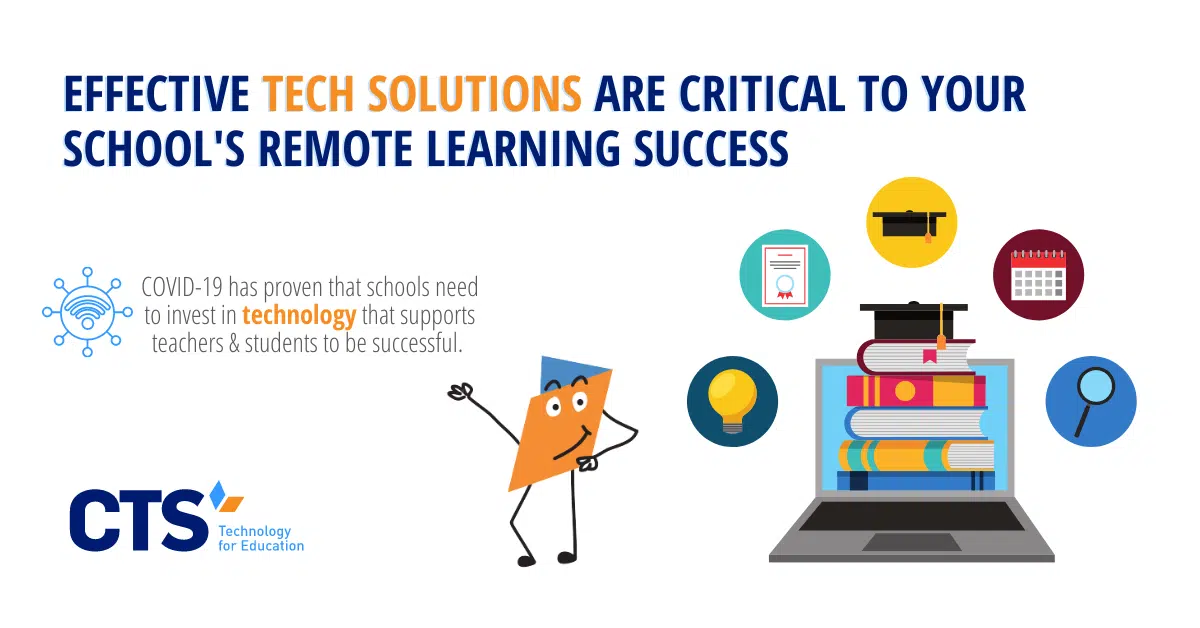Technology access is critical for successful remote schooling.
While it might seem obvious, COVID-19 has shown how critical technology access is for effective remote schooling. While schools with relatively greater resources quickly deployed laptops to individual students, less-resourced schools struggled to provide each child with a functioning device. Even schools that were able to do so faced another daunting obstacle: internet access, which many of their students’ households lacked.
Keeping track of devices has also proved challenging. As schools rapidly shifted to remote instruction, many administrators had little time to think through systems for retrieving any of their devices, which often co-mingled with those of their students’ families or siblings, whose schools also closed.
Both of these challenges—resource access and effective technology operations—suggest schools can use the inequities exposed during COVID-19 to spur greater investment in school technology, beginning with hardware. Leveraging federal E-rate funds, for example, can allow schools to procure devices and other critical technology infrastructure central to remote schooling and, increasingly, the “regular” school day. Similarly, investments in WiFi hotspots can help support students who lack internet access at home, allowing them to fully engage in online instructional content regardless of whether they’re in the school building or a local library.
Outsourced IT specialists alleviate the troubleshooting burden often placed on teachers.
All too often, teachers have spent the majority of their remote schooling time troubleshooting individual device or software issues, rather than engaging in instruction. Schools who were able to invest in outsourced IT specialists witnessed the benefits of alleviating teachers’ troubleshooting burden. Rather than resetting an individual student’s password or calling a help desk to figure out what’s wrong with a specific student’s device, teachers could redirect student issues to a help desk technician, who could then quickly triage the student’s issue.
Where resources permit, schools might consider increasing the capacity of their in-house or outsourced school technology teams to extend these benefits to in-person instruction, relieving teachers of having to address individual technology issues during the school day and focus their attention more intently on student learning.
Learning management systems are vital to remote schooling and digital resource organization.
As administrators and teachers began pushing out increasingly large numbers of documents via email, schools with robust learning management systems were more easily able to organize and archive instructional content for later retrieval. Instead of rummaging through an email inbox to search for a particular link, for example, families whose schools maintained a well-organized learning management system were able to quickly retrieve their students’ instructional content and resume learning in a timely manner.
Those schools that had learning management systems but failed to organize them effectively quickly felt the effects, which hampered student learning and led to frustrating, safari-like expeditions to retrieve specific documents. As students and staff return to school during the course of the current academic year and next, leadership teams can prioritize either procuring or effectively organizing learning management to maximize the utility of their online instructional resources.
Consistent asynchronous learning opportunities may make sense for some students.
While schools have long known that each student has an individual learning style, remote schooling has shown just how well certain students thrive when given asynchronous learning time. Rather than confining students to a desk for an entire class period or even an entire school day, remote learning allowed students to stop and start assignments at their own pace, provided, of course, they ultimately submitted an assignment by the teacher’s deadline.
Figuring out ways to build more asynchronous time into the regular school day or even re-thinking broader scheduling paradigms may therefore allow schools to improve performance among subsets of their student populations. Just as large corporations are increasingly rethinking the extent to which employees need to be on-site to accomplish their duties, so too should schools consider the extent to which elements of the remote learning environment can be normalized as part of regular school programming.
At CTS, we help schools navigate the remote learning process so they can focus on accomplishing their unique missions.
We’ve worked with more than 60 schools across the United States to adapt their unique instructional programs to the demands of remote learning. From device tracking and troubleshooting to longer-term strategic advice, we’ve leveraged our partnerships with leadership teams across the country to further their schools’ unique missions.
As schools across the country grapple with re-opening or even a return to remote instruction, we stand ready to provide administrators with the know-how and technical expertise to ensure learning continues uninterrupted for each student. If your school needs help managing its device inventory or simply wants to learn more about how to accomplish a particular IT project, we’re here to help. Contact us today to learn more about our services and how we can help your school accomplish its unique mission.




